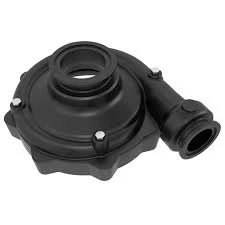Mobile:+86-311-808-126-83
Email:info@ydcastings.com
Essential Tools and Techniques for Successful Sand Casting Projects
Understanding Sand Casting Tools
Sand casting is a versatile and widely-used manufacturing process that involves creating metal components through the pouring of molten metal into a mold made from sand. This process has been employed in various industries for centuries due to its simplicity, cost-effectiveness, and ability to produce complex shapes. A comprehensive understanding of sand casting tools is essential for anyone involved in this field, as these tools significantly impact the efficiency and quality of the final products.
The first essential tools in sand casting are the molding tools. These include molding boxes or flasks, which hold the sand and shape the mold. Mold boxes can be constructed in various sizes, depending on the dimensions of the object being cast. There are two main types of molds split molds, which consist of two parts that are joined together, and single-piece molds. The use of molding tools determines the accuracy and surface finish of the casted part.
Another critical tool is the rammer, a device used to compress the sand into the mold box, ensuring that the mold maintains its shape once the pattern is removed. The quality of the rammer affects the density of the sand, impacting the final strength and detail of the casting.
2. Patterns
Patterns are replicas of the objects to be cast, and they play a crucial role in sand casting. Patterns can be made from various materials, including wood, metal, or plastic. The choice of pattern material depends on multiple factors such as the required precision, volume of production, and the type of metal being cast. For complex shapes, collapsible patterns are often used to assist in the mold creation process without damaging the mold's integrity.
Some patterns also come with cores—inserted features that form internal cavities in the final cast. Cores allow for the production of intricate internal shapes that would otherwise be impossible to achieve.
sand casting tools

3. Melting and Pouring Tools
Once the mold is prepared, the next step is to melt the metal. Crucibles, which are containers capable of withstanding high temperatures, are utilized to hold the metal during the melting process. Electric furnaces and induction furnaces are common melting tools used in industrial sand casting due to their efficiency and ability to attain precise melting temperatures.
Pouring tools, such as ladles and pouring basins, are used to transfer the molten metal from the furnace to the mold. Ladles come in different shapes and sizes, often fitted with a pouring spout that directs the metal flow into the mold. The speed and technique of pouring can also affect the quality and integrity of the casting, making these tools vital to the casting process.
4. Finishing Tools
After the metal has cooled and solidified, the final step involves removing the cast from the mold and finishing it. This is where finishing tools come into play. These may include grinders, sanders, and saws, depending on the desired finish of the part. Finishing tools help achieve the required surface smoothness and dimensional accuracy, often dictated by the application of the casting.
Conclusion
Sand casting tools are integral to the overall process of creating metal parts through casting. From molding tools to melting and pouring equipment, each component plays a specific role in producing high-quality castings. Understanding these tools enhances the capabilities of manufacturers and leads to better product quality and efficiency in the sand casting process. As technology evolves, the design and functionality of these tools continue to improve, paving the way for more innovative casting techniques in the future.
-
Why Should You Invest in Superior Pump Castings for Your Equipment?NewsJun.09,2025
-
Unlock Performance Potential with Stainless Impellers and Aluminum End CapsNewsJun.09,2025
-
Revolutionize Your Machinery with Superior Cast Iron and Aluminum ComponentsNewsJun.09,2025
-
Revolutionize Fluid Dynamics with Premium Pump ComponentsNewsJun.09,2025
-
Optimizing Industrial Systems with Essential Valve ComponentsNewsJun.09,2025
-
Elevate Grid Efficiency with High-Precision Power CastingsNewsJun.09,2025











